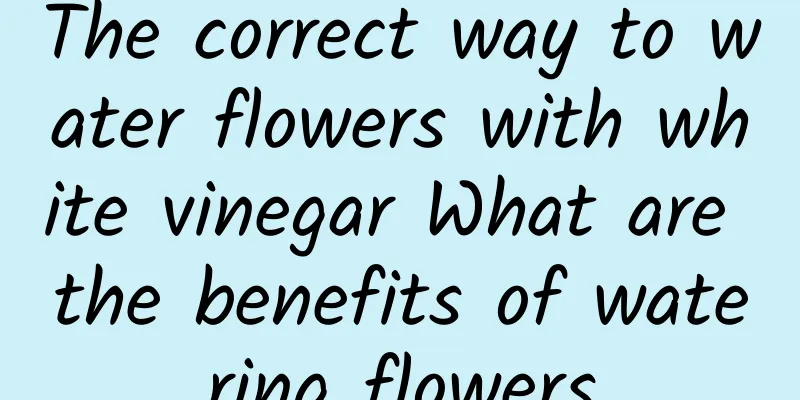The correct way to water flowers with white vinegar What are the benefits of watering flowers

|
White vinegar can be used to water flowers to adjust the acidity and alkalinity of the soil. Many plants that like acidity, such as roses, jasmine, gardenias, etc., can be watered with vinegar water. Watering flowers with white vinegar can treat yellow leaves of plants. Vinegar water can also promote plant photosynthesis and increase chlorophyll content. Wiping leaves with vinegar water can also prevent diseases and pests. It is a good material for flower and plant maintenance. White vinegar cannot be used directly to water flowers. The white vinegar consumed at home generally contains salt and has a high concentration. Using it directly to water flowers will burn the plant roots, causing the leaves to turn yellow, wither, or even die. In addition, white vinegar cannot be used to water alkaline-loving plants. How to water flowers with white vinegar1. Wipe the leaves with white vinegar water Spraying plant leaves with white vinegar mixed with water can prevent the occurrence of diseases and pests. You need to mix white vinegar and clean water in a ratio of 1:20 and stir evenly. After wiping the leaves of the plant clean, you can spray the vinegar water or wipe the leaves. However, do not do it at noon when the sunlight is too strong, as strong light can easily burn the leaves through the vinegar water. 2. Watering with white vinegar water Choose salt-free white vinegar and mix it with water in a ratio of 1:50. Water the plants in the morning or evening. Water them once every half a month or so. This can supplement the iron and calcium elements needed for plant growth, promote plant growth, and make the leaves greener. Precautions for watering flowers with white vinegarYou should choose edible white vinegar to water the flowers, and do not use industrial white vinegar. Otherwise, not only will it fail to provide the nutrients needed for plant growth, it may also cause plant death. Also, you cannot water alkaline-loving plants, such as pomegranates, forsythia, albizzia, figs, etc., and do not use white vinegar water. |
<<: Where is American ginseng suitable for planting and what conditions are required for planting
>>: The best time to prune kumquat trees and how to prune them
Recommend
How to grow Ficus microcarpa
Farming methods Ficus microcarpa is a tropical pl...
Is Lavender Poisonous?
Is Lavender Poisonous? Although featherleaf laven...
What is lettuce?
What is lettuce? Romaine lettuce is a plant of th...
How to care for azalea to make it more vigorous (home care and management methods for azalea)
1) Sunshade and protection from sun exposure Ever...
How to grow fuchsia
1. Soil If you want it to grow vigorously, you ne...
When should garlic be planted?
Garlic, as an economic crop , can indeed bring hi...
What are the cultivation methods and precautions of needle sunflower?
Needle sunflower has strong adaptability and is e...
The efficacy and function of Yunnan Camellia
Seed oil Many people may not know that the seeds ...
The color of jasmine
The color of jasmine Jasmine is white and has a s...
How to grow orchids, orchid pictures
1. How to raise 1. Soil: The planting soil can be...
What should I do if the spider plant does not grow small spider plants? Why does the spider plant not grow small spider plants?
1. Reasons 1. Lack of light: It is a shade-loving...
Is the four-season peony suitable for indoor cultivation?
The four-season peony is more suitable for growin...
What is the best season for planting Patchouli?
Patchouli planting time The planting time of Patc...
How to divide the weeping angel
Time for division of Dripping Guanyin The weeping...
Can I plant a jujube tree in front of my door?
Can I plant a jujube tree in front of my door? It...









